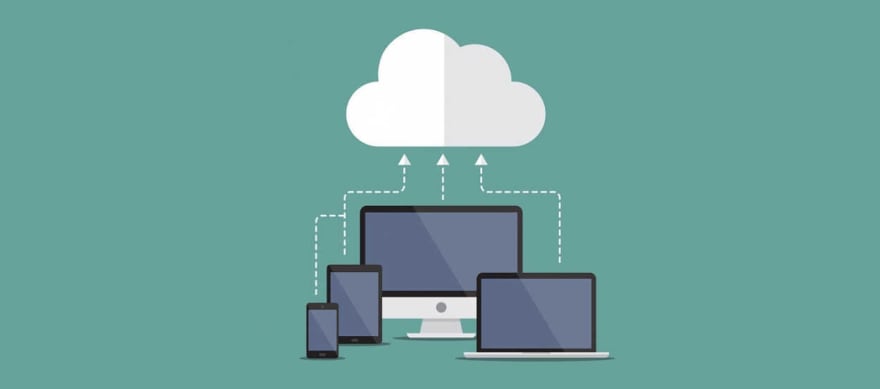Introduction to Cloud Computing [Part 1]

Luis
Posted on September 25, 2022
![Introduction to Cloud Computing [Part 1]](https://media2.dev.to/dynamic/image/width=1000,height=420,fit=cover,gravity=auto,format=auto/https%3A%2F%2Fdev-to-uploads.s3.amazonaws.com%2Fuploads%2Farticles%2Ffrp38d4kdthghykde0dj.jpeg)
My intention
Hello, this is my first post here, my name is Luis Valdivia, and I'm a backend developer with 12 years of experience, 6 of them working with cloud computing mostly with AWS and GCP.
I always wanted to write about cloud computing because there is a misconception about who can learn about the cloud. I have heard from many people (some of them were people I worked with) that you have to be a programmer to learn about it.
So I want to use this series of posts to prove them wrong because you can learn about the cloud without being a programmer.
In this first post, we will start by teaching you some basic terminology and will continue until you will be able to know about the services of a cloud provider (AWS) and be ready to continue your journey until you get certified.
Wax off wax on
 [SOURCE: https://edcrocks.com/2021/02/07/wax-on-wax-off-karate-kids-lesson-about-drilling/]
[SOURCE: https://edcrocks.com/2021/02/07/wax-on-wax-off-karate-kids-lesson-about-drilling/]
First, we are starting with some basics concepts:
On-Premise Data Center
 [SOURCE: https://blog.dataprius.com/index.php/2016/06/17/on-premise-servidores-problemas-solucion-cloud/]
[SOURCE: https://blog.dataprius.com/index.php/2016/06/17/on-premise-servidores-problemas-solucion-cloud/]
According hpe.com, On-premises refers to private data centers that companies own in their facilities and area maintained by themselves.
So, what's the meaning of this? Data centers refer to computers where software and applications are running and companies need to hire specialists to give them support like:
- Operating system upgrading
- Firewall configuration
- Technology upgrade (change the motherboard, hard drive, memory slot, and others)
- And some other things that these computers need to run the applications or software needed.
All the things mentioned before require money, but we also need others like an internet connection, a physical location where they are placed, electrical services and other ones to keep them running like the ones we use at our houses.
Cloud Computing
 [SOURCE: https://www.ealde.es/cloud-computing-caracteristicas-funcionamiento/]
[SOURCE: https://www.ealde.es/cloud-computing-caracteristicas-funcionamiento/]
According to AWS, cloud computing is an on-demand delivery of IT services over the Internet with pay-as-you-go pricing.
So, what's the meaning of this? Cloud computing doesn't require buying or maintaining any physical hardware, instead, we rent a service for the amount of time we need, and we only are charged by that time. We only need to use our credit card and hire the service of a Cloud Provider.
If you want to know more about it, you can watch this video
On-premise vs Cloud Computing
Let's talk about differences:
Cost
In On-premise, you require an initial payment because you need to buy the hardware from a specific manufacturer, then you have to wait until it arrives and after that, you have to hire a specialist to install and deploy what you need and hire some extra services to keep them running.
In Cloud computing, there is no initial payment because the provider rents you the hardware or service, as we mentioned before you only pay for what you use (1 hour, 1 month, 1 year, and so on), and you don't have to worry about upgrading the hardware, internet connection and security (you have to read the SLA's of each provider, we will discuss this in another post).
Human Resources
On-premise, you need to hire a specialist to make the initial configuration for your new hardware, and then they will the one in charge of giving support to it.
In Cloud computing, the initial configuration is made by the provider, you only need some basic knowledge to keep them working (this is a topic for another post, don't worry, these are your first steps).
Flexibility
As we know, technology changes every day, some time ago we didn't have computers in our houses, but now we do, so how do these changes apply to On-premises and Cloud?
As we were talking in On-premises, we require buying specific hardware to run our applications or software. After some time, our hardware becomes old, and we need to replace some parts, if we are lucky the provider still exists but if we aren't, we need to buy a new one which will be more expensive.
In Cloud computing, the provider is responsible for the hardware, if we rent a service we don't need to worry about hardware upgrading.
Security
This is an interesting topic because all companies and people worry about security because the information is the key asset for their operation.
Many cloud computing providers have security certifications and allow companies to have redundancy, this means that you can have several services running and syncing your data.
If you want redundancy in On-premise, you need more money because you have to buy double everything (hard drive, CPU, GPU, and so on).
Deployment
In cloud computing, you only rent the service for the time you need, and you can deploy the solution you want, for example, MySQL Database, Oracle Database, Machine Learning algorithm, Window Server instance, and many other services, you only need to learn about the service and start testing.
In On-premise, you need to make some additional configurations if you want to test different services and in some cases buy new hardware.
As you can see, there are a lot of advantages to using the cloud (I invite you to comment about others I didn't mention), in this post my intention is not to attack on-premise infrastructure because I worked with them and still do in some scenarios. The main point of this post is for you to understand these words.
Follow me for part 2.

Posted on September 25, 2022
Join Our Newsletter. No Spam, Only the good stuff.
Sign up to receive the latest update from our blog.